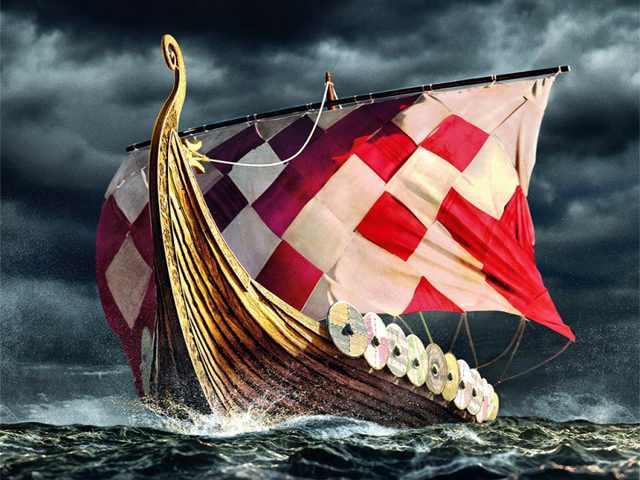Without Viking ships, the Viking Age would not have existed. They did not bring Scandinavians to plunder in the Frankish Empire and the British Isles, but also across the Russian rivers to Byzantium. They were also what first made possible the settlement of North Atlantic islands such as the Faroe Islands, Iceland and Greenland by northern people. Rudolf Simek, Professor of Scandinavian Studies at the University of Bonn and himself a passionate sailor, now dedicates an entire book to this most important means of transport of the Viking Age.
In it he explains the few written sources that provide information about the appearance and cultural significance of Viking ships, such as skaldic stanzas or Old Norse sagas . These testimonies, which are often not very revealing, determined modern knowledge about Viking ships for a long time. Only through archaeological finds from the end of the 19th century could this knowledge be expanded considerably. Some of the finds come from boat graves, such as the Gokstad ship discovered in Norway and the richly carved Oseberg ship, both of which are now on display at the Viking Ship House in Oslo . Other ships were once deliberately sunk as artificial barriers and laboriously recovered by underwater archaeologists, such as the Skuldelev ships from Roskildefjord, which at Roskilde’s Viking Ship Museum . can be seen
Simek makes it clear that there were by no means only the famous longships used for warfare, but a whole range of other classes of Viking ships – for example those used for trade and transport. In chapters on rowing, sailing and navigation, Simek clears up a number of misunderstandings that are particularly widespread in Viking films . Although the round shields typical of the Viking Age could actually be attached to the outer side of some of the ships, this made rowing impossible because the shields blocked the rowing ports. In contrast to the TV series Vikings , for example, where there is permanent rowing with shields attached to the outside, shields may only have been used in this way when sailing and probably rather exceptionally – especially for representation purposes. According to Simek Viking Ecology: Man and the Environment in the Viking Age, there is no reliable archaeological or written evidence of any navigational devices that are allegedly used in films, such as compasses or so-called “sun stones”; Rather, in the Viking Age people orientated themselves mainly on coastlines, the height of the sun and the stars and trusted in knowledge based on experience.
Chapters on the development of shipbuilding in Scandinavia from the Neolithic to the Viking Age, on the technical procedures involved in building Viking ships, the importance of ships in Viking Age religion and on the use of Viking ships today, for example in advertising and company logos, round off the volume. The appendix contains a helpful glossary that explains special nautical vocabulary as well as information on further reading.
“The Ships of the Vikings” is a successful presentation on the subject that is well worth reading. which usually only cover a few pages Although the book is quite short at just over 100 pages, it conveys much more extensive and detailed knowledge than the chapters on Viking ships in general introductions to the Viking Age (such as in Arnulf Krause’s “The World of Vikings” ), could. Anyone who has already read such an introduction but would like to learn more about Viking ships, their use and their cultural significance is therefore well advised to read this volume, which is illustrated with numerous black-and-white photos, sketches and maps.

